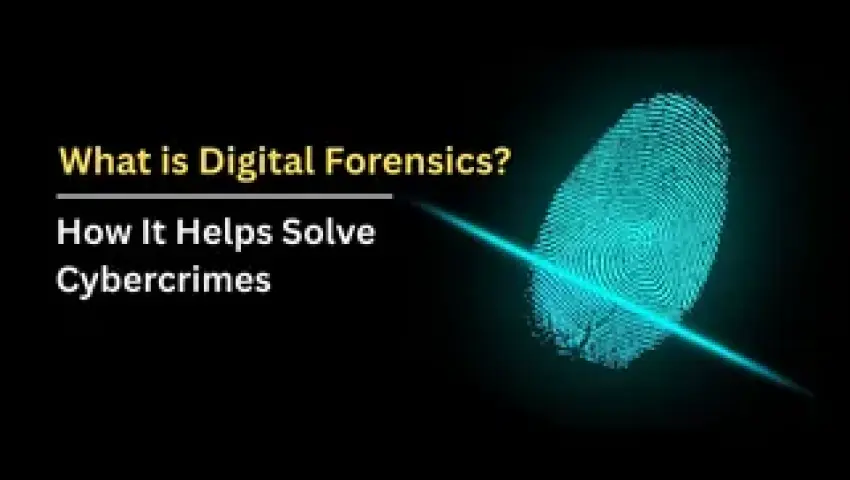
Case Study: How Mobile Forensics Helped Solve a Cybercrime Case
A sophisticated cybercrime baffled investigators until a single mobile device revealed the truth. Dive into this real-world case study on the power of mobile forensics.
In the world of cybercrime, the digital trail can be complex and deliberately obscured. But often, the key to unraveling the entire scheme lies not in a server log, but in the pocket of the perpetrator or an unwitting accomplice.
This case study, based on a composite of real investigations, details how a seemingly unsolvable Business Email Compromise (BEC) attack was cracked wide open through advanced mobile forensics. The names and specific details have been altered to protect sensitive information, but the technical methods and investigative workflow are accurate.
The Case: The Phantom CFO
The Victim: A mid-sized manufacturing company, "Precision Parts Inc."
The Incident: A sophisticated attacker impersonated the company's CFO via email, instructing the accounts payable department to wire a $1.7 million payment to a new vendor for an "urgent materials contract." The payment was processed and sent to an overseas bank account. By the time the real CFO was alerted days later, the money was gone.
The Initial Digital Trail: The company's IT team and initial investigators found:
The fraudulent emails originated from a look-alike domain ( preciseonparts.com instead of precisionparts.com ).
The emails were sent via a secure, privacy-focused email service with servers outside of US jurisdiction.
The bank account was opened with forged documents and was emptied immediately.
Traditional server and network logs led to dead ends. The attacker had used VPNs and proxies.
The case was at a standstill. Until investigators turned their attention to an unexpected source: a company-issued iPhone belonging to the executive assistant to the CFO, "Sarah."
The Breakthrough: A Focus on Mobile
Sarah was the one who had initially processed the fake invoice. She was cooperative but distraught. She insisted the email looked perfectly legitimate and had arrived at a time of high pressure. Investigators decided to forensically examine her iPhone, not as a suspect, but as the "witness device" that had interacted with the attacker.
The Mobile Forensic Investigation:
Step 1: Acquisition
Investigators used a tool like Cellebrite UFED to perform a full file system extraction of Sarah's iPhone. This gave them a complete copy of the device's data, including deleted items.
Step 2: Analysis - Connecting the Dots
Using Magnet AXIOM, the forensic team began correlating data from different apps. Here’s what they found:
The "Smoking Gun" in Calendar: The fraudulent email arrived on a Tuesday morning. Sarah’s iPhone calendar contained an entry for that same morning, created weeks prior, titled "Q3 Financial Review w/ CFO." This made her highly receptive to a financial-related email from her boss.
The Source of the Leak in LinkedIn: A search of Sarah's iPhone's SQLite databases revealed a recently viewed LinkedIn profile. The profile was for a "Jason Reed," a supposed logistics manager. Further analysis showed that "Jason Reed" had connected with Sarah two months earlier. His profile was a well-crafted fake.
The Command Channel in WhatsApp: The most critical find was in the WhatsApp application. Deleted message artifacts, recovered through SQLite carving, revealed a short but damning conversation. Posing as Jason Reed, the attacker had sent a message to Sarah the day before the fake invoice arrived, saying: "Hope you're ready for the big review tomorrow. The CFO can be intense! Let me know if you need any docs from my end." This message psychologically primed Sarah to expect a stressful financial day, making the fraudulent email seem more plausible. The message was deleted from the chat history after she confirmed receiving the "invoice."
Geolocation Corroboration: The phone's geolocation data placed Sarah at an industry conference three months prior—the same conference where "Jason Reed" had supposedly connected with her in person, a fact gleaned from their initial LinkedIn message exchange.
Putting the Puzzle Together
The mobile evidence allowed investigators to reconstruct the entire attack chain:
Reconnaissance: The attacker identified Sarah as the CFO's gatekeeper via LinkedIn.
Social Engineering: They created a fake persona, "Jason Reed," and connected with her online and at a conference to build legitimacy.
Priming: Using WhatsApp, the attacker subtly reinforced the upcoming (and real) financial review on Sarah's calendar.
The Strike: The fraudulent email was sent at the perfect psychological moment. The attacker used information only someone familiar with her schedule would know.
Covering Tracks: The WhatsApp messages were deleted immediately after their purpose was served.
The Outcome
With this new evidence, the investigation shifted. While the money was likely unrecoverable, the investigative report was critical for the company's insurance claim. Furthermore, the detailed modus operandi (MO) was shared with law enforcement agencies, helping them link this case to a wider BEC ring.
For Sarah, the mobile forensics report exonerated her from any suspicion of malice, confirming she was an unwitting victim of an exceptionally sophisticated social engineering attack.
Key Takeaways for Investigators
This case highlights several critical lessons:
The Device is a Witness: Mobile devices are not just communication tools; they are repositories of context—calendars, location history, app usage, and social networks.
Correlation is Key: The individual data points (a calendar entry, a LinkedIn view, a WhatsApp message) were innocuous alone. It was the correlation of this data across multiple apps that revealed the attack pattern.
Deleted Doesn't Mean Gone: The attacker's attempt to hide their tracks by deleting the WhatsApp messages failed due to advanced forensic recovery techniques.
Human Element is Exploitable: This case was a reminder that technology is only one layer; cybercriminals often exploit human psychology most effectively.
Mrityunjay Singh
Leave a comment
Your email address will not be published. Required fields are marked *

